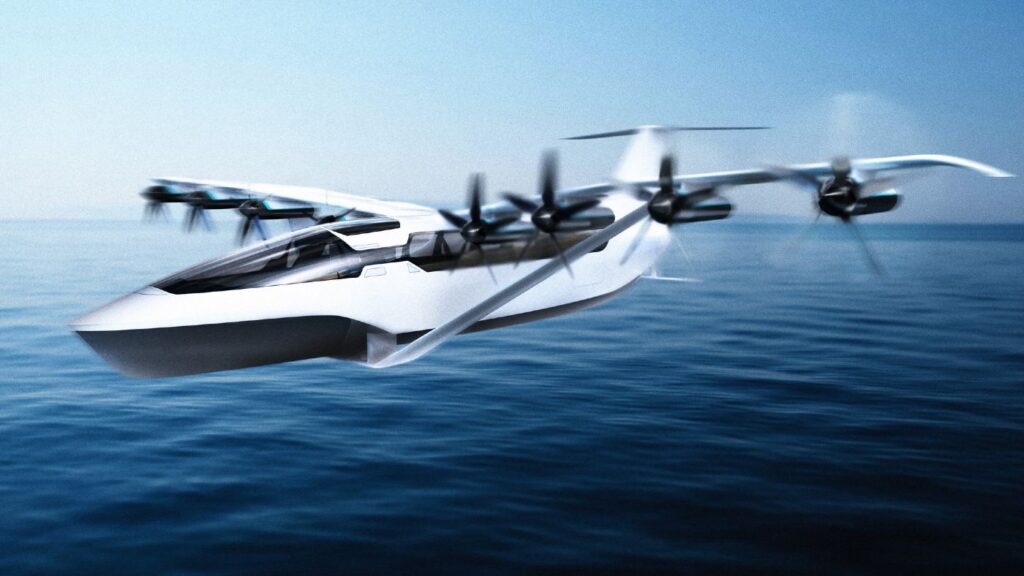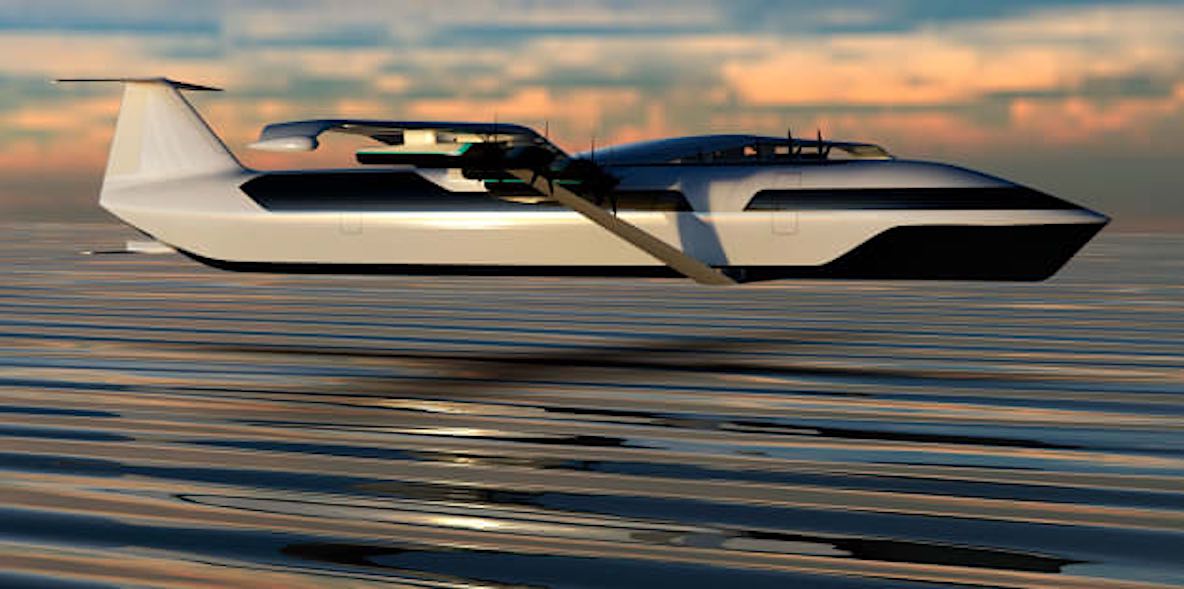
The future of travel is bold, with a boat-plane hybrid set to transform short distance ferry services.
From the Virgin Hyperloop to HAV carbon-free dirigibles to self-driving cars to, now, this, the REGENT “seaglider” is an electric transport plane that can do 180 mph, or around six-times the speed of a ferry, and with double the range of electric aircraft, but with half the manufacturing costs.
All these pros are down to its unique design as essentially a trio of vehicles in one, which the company believes will seize control of a market for short flights/ferry routes such as LA to Santa Barbara or San Francisco, or New York to Boston, with maybe Washington, D.C. thrown in there as well.
When loading and offloading passengers, the seaglider rests on the sea like a normal seaplane or boat.
When operating within the crowded waters of a port, the seaglider deploys its hydrofoils, matching its impressive propulsion with the maneuverability of the foils below.
Once on the open sea, the foils are withdrawn and it takes on the aspects of a “wing-in-ground effect vehicle,” a design invented all the way back in the 1960s, that uses high speeds to hover just above the surface of the water. (Watch their video below.)
So far REGENT’s founders have raised almost $10 million from investors, which have included Mark Cuban and Peter Thiel.

Wing-in-ground effect vehicles are actually considered boats, and subject to maritime, rather than aviation laws. In this way the seaglider can skirt around current technology limitations of battery-powered electric motors and offer truly zero-emissions transport.
The company imagines that battery advances currently being pursued should raise the range of the seaglider to 500 miles from 180 miles in the not-too-distant future.
RELATED: Rubber Made From Dandelions is Making Tires More Sustainable – Truly a Wondrous Plant
The company has received statements of intent worth $465 million, have acquired the sponsor dollars of operators Brittany Ferries, Goombay Air, and SplitExpress, and expect to have a quarter-sized prototype by the end of the year, and a full-sized prototype operational in 2023.
(WATCH the video for this story below.)
POWER UP the Good News by Sharing It…




















